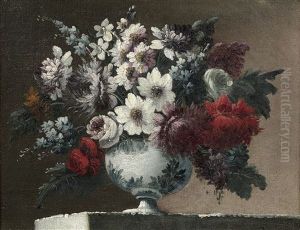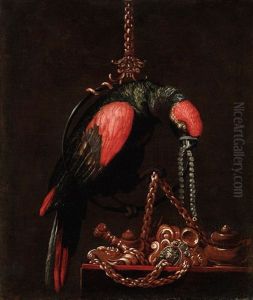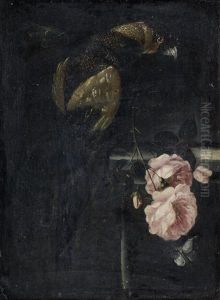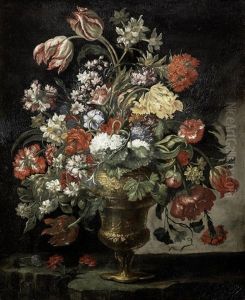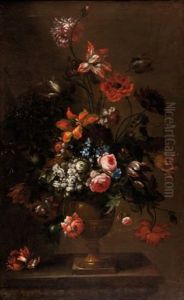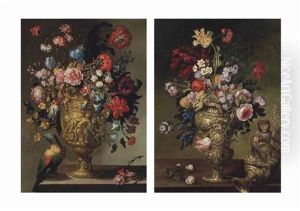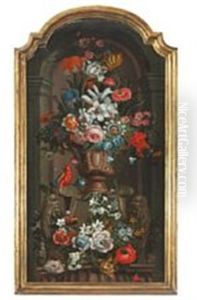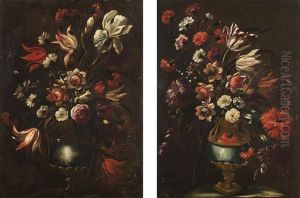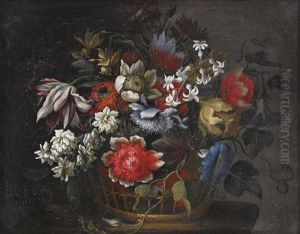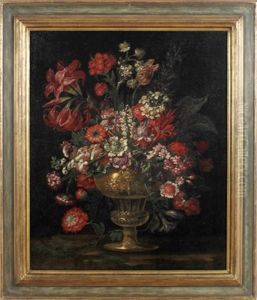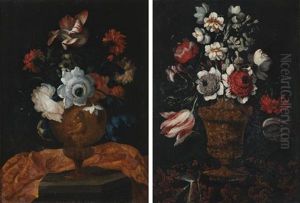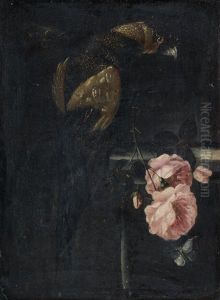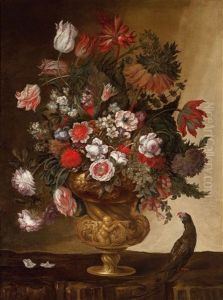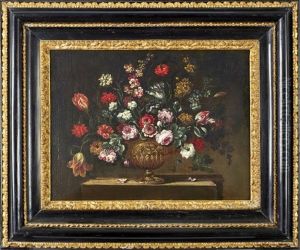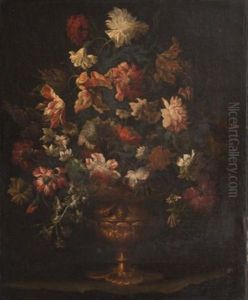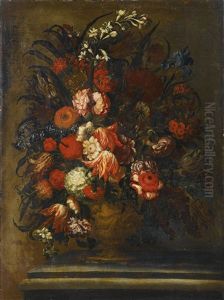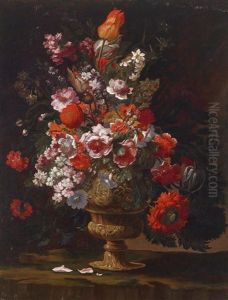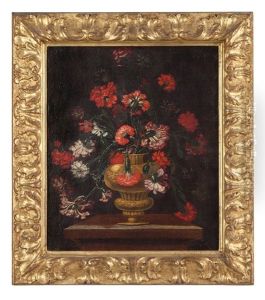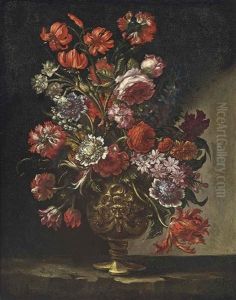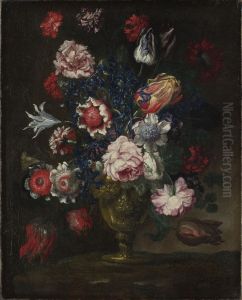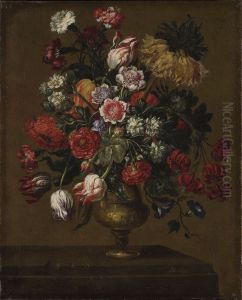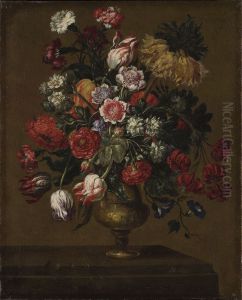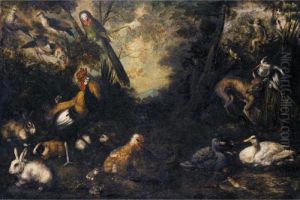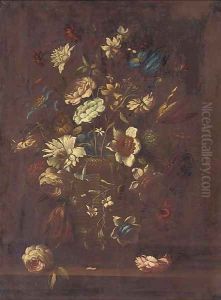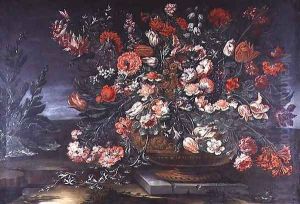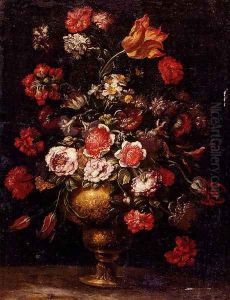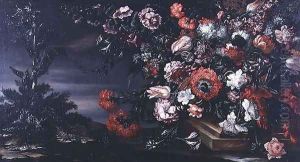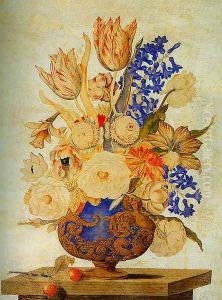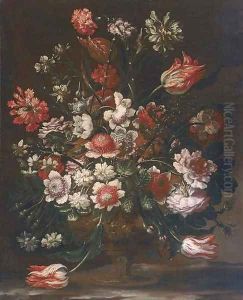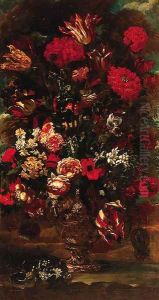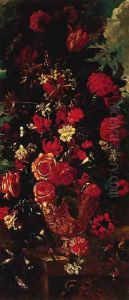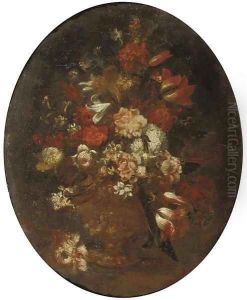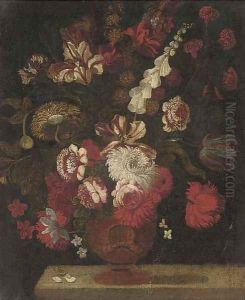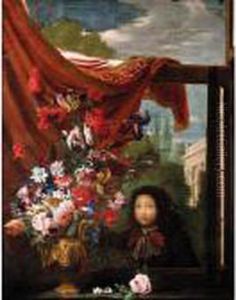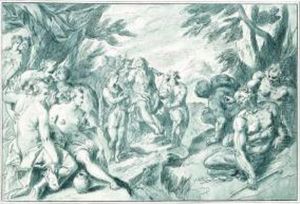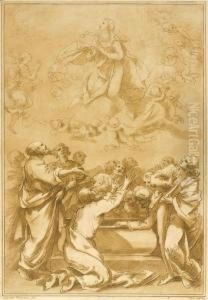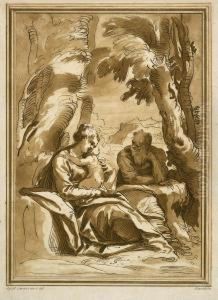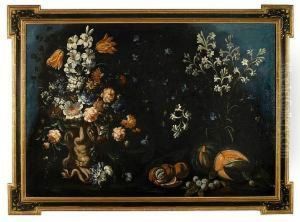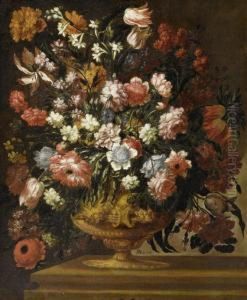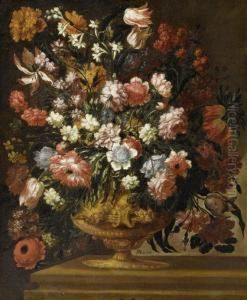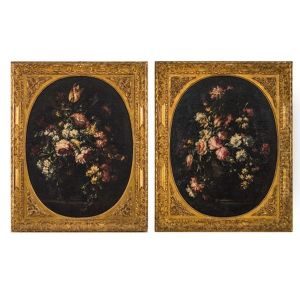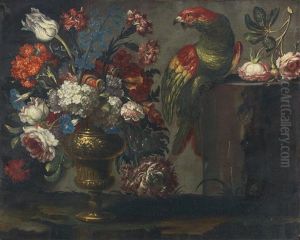Andrea Scacciati I Paintings
Andrea Scacciati, born in 1642 in Florence, Italy, was an Italian painter who specialized in still-life paintings, particularly of flowers and fruit compositions. His work is characterized by a delicate use of color and careful attention to detail, which suited the Baroque taste of his time for lush and vivid depictions of nature.
Scacciati was born into an era where art was undergoing significant changes. The Baroque period was in full swing, and artists were exploring new ways of expressing movement, color, and emotion. Andrea Scacciati was trained in Florence, a city with a rich artistic tradition that dates back to the Renaissance. Although not much is known about his early training, it is likely that he was influenced by the works of other Florentine artists such as Bartolomeo Bimbi and Lorenzo Lippi, who were known for their still-life paintings.
During his career, Scacciati received numerous commissions from the Medici family, the powerful dynasty that ruled Florence and were great patrons of the arts. His paintings often found their way into the collections of the Medici villas, where they were admired for their beauty and naturalism. He was particularly adept at painting a variety of textures and surfaces, from the smoothness of flower petals to the roughness of leaves, which gave his work a tactile quality that was much appreciated by his contemporaries.
Scacciati's paintings typically feature arrangements of flowers in vases, often set against a dark background that serves to highlight the luminosity and color of the petals and fruits. His compositions are balanced and show a keen understanding of harmony and structure. He also paid great attention to the scientific accuracy of the plants he depicted, which resonates with the era's interest in botany and the natural sciences.
Andrea Scacciati's contributions to the genre of still-life painting were significant, as he helped to elevate the status of floral still lifes through his refined technique and the poetic sensibility of his work. He died in 1710 in Florence, leaving behind a legacy that would influence future generations of still-life painters in Italy and beyond. His works can be seen today in various museums and art collections, where they continue to be appreciated for their elegance and mastery of form.
